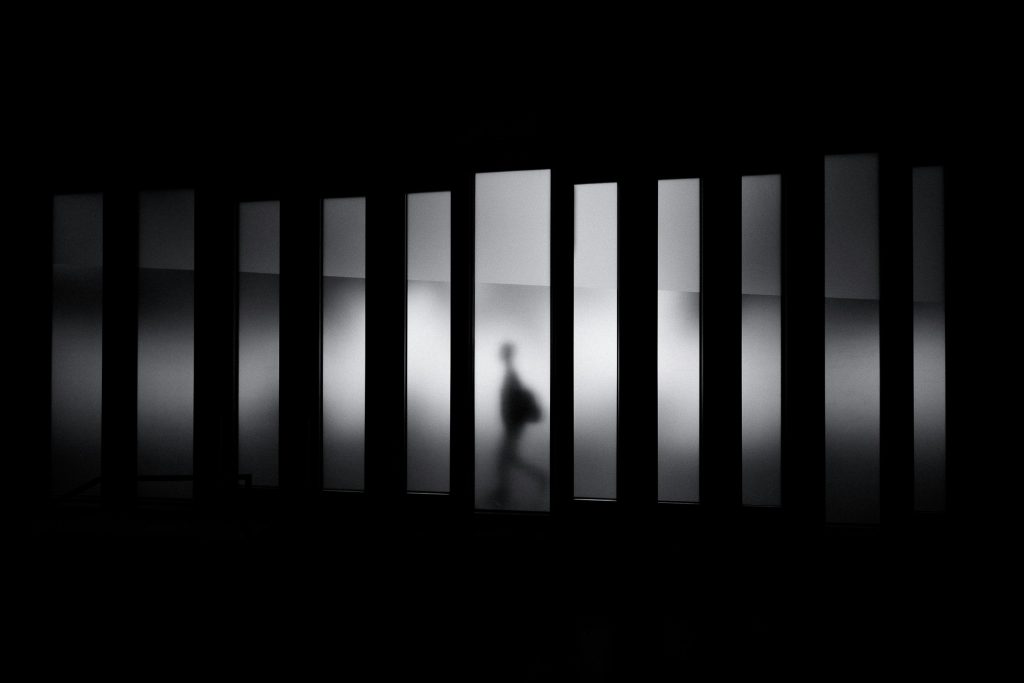Opals gleamed in the darkest night,
They reminded me of a planet far away,
A world I had once dreamed of in another realm.
Around it, seven moons danced in silence,
Like comets and falling stars.
A voice sang within my saddest melodies,
Yet it held me, and for the first time, I felt loved.
Is it enough to live like the same poles of a magnet,
Always pushing apart?
Together in the country of lost causes,
Stripped bare by the weight of missed chances.
Beneath a forgotten fig tree, I first discovered grief.
Whether as a child or as an old woman,
I asked if longing ever ends.
Or if I must carry these ghosts forever.
I recognized them, one by one,
They belonged to a broken clock with no sand to fall.
Yet they dwelt inside my house,
And we remained haunted together, in grim wonder.
There was a little girl clutching a ragged doll,
Her laugh broke into all the dusty corners.
She frightened me most, for she had once been loved.
A taciturn bride sat beneath the windowsill,
Never turning when I called her name.
Veiled in her wedding gown,
I had seen her clutching a silk handkerchief.
And beyond her silence, in my room stood a black shadow,
As if I owed her something unspoken.
Dreading the answer, I never asked,
Yet I knew her better than any in this haunted house.
It took me a long time to realize I was alive,
A longer time still to understand I was not about to die.
Then I heard your voice calling, telling me it was safe to go outside.
You smelled of peaches in bloom, smiling like a shy child.
Now my ghosts wished to move on as well.
As if there were no delight in haunting without me.
Among black candles and salted tears,
I watched them leave, one by one.
With burnt rosemary thick in the air, there came a knock at the door.
The little girl ran to my side,
Her beautiful smile shone as she took my hand, and I smiled back.
On the threshold, her grandmother waited; I watched them embrace,
And my chest tightened, bound by bittersweet remorse.
Was it I who had kept them hostage within my dreadful castle?
At my doorstep stood horses, a chariot, and an elegant man.
For the first time, the lonely bride turned and leapt with excitement.
The gentleman carried himself as one who had seen it all.
He offered his arm to the once-lonely woman in white.
Like a father comes to lead his daughter to the church and give her away.
The last rays of light faded, and the night rolled in.
I did not need to look for her; I knew she was behind me.
No one was coming, no one would save us from the ocean dragging us down.
I had courted her since I first met her, and I had called her.
She had never given what I asked, yet she kept me company.
Was it because I had never ceased praying for that prophecy?
She waited for me to say the words.
“I want to live,” I said, and she tapped gently on my back.
As if I had made her proud, as if she had hoped I would choose anything but pain.
I knew I had to repeat it again and again.
Until at last I felt I could breathe.
Had I been holding my breath all this time?
I heard myself laugh, and the echo told me I was finally alone.
My ghosts had gone where they belonged.
Running, shining like fireworks, I crossed the street to find you.
You’ve lifted me up, you’ve inspired me to stop holding on to the pain, the ghosts, the darkness.
Instead, now we live.
Together.

The Myth of Grief: A Journey from Haunting to Life – Analysis
This myth is not simply a set of images; it is a map of survival. Every image (every opal, fig tree, moon, and magnet) is a cipher for a lived experience. Lissette writes not as a poet playing with symbols but as someone excavating her own underworld. The piece begins in space: opals gleaming like distant planets, a world once dreamed of. Opal is her birthstone and the birthstone of the man who helped her through his music: a singer, an artist whose work taught her discipline and gave her permission to reach for happiness. Around that planet, seven moons dance, echoing the seven members orbiting the founder of his group. The cosmology is both real and mythic: a personal pantheon.
The magnet image cuts deeper. She does not say “two magnets attracting,” but “same poles”, a scientific truth about repulsion. It’s her way of saying that love and healing can exist even when bodies cannot touch, even when lives are separated by oceans. She can be inspired by someone, even loved by them in a spiritual way, but still never meet them. The magnet is the paradox: closeness that cannot collapse into contact.
Then the poem descends. The fig tree (a literal tree from her childhood, abandoned at the edge of her grandparents’ property) becomes the gatekeeper of grief. It holds memories of her grandmother who died when she was nine, memories that have stayed vivid for decades. This is where she introduces the “broken clock with no sand,” time stopped by loss. Ghosts take up residence inside her house because they have no other place to go. She’s been haunted by them, but she’s also been their host.
The little girl clutching a ragged doll is not just an image but a self-portrait: the child who was loved by her grandmother and then, not really loved like that ever again. The taciturn bride beneath the windowsill is another self, the potential version of her who would one day be walked down the aisle by her father. But her father too has passed away. These aren’t ghosts of strangers but ghosts of potential selves, “lives unlived” in the sense that Kierkegaard, or even Derrida, might speak of specters: presences of what will never be.
The black shadow in the room is where the poem edges closest to death. She has courted death for years, not in a melodramatic way but as a constant background; a prophecy whispered down from her family, where many died young. Water becomes the metaphor for depression, the ocean dragging her down. She writes that she called to this shadow, that she wanted release, but it never gave her what she asked. Instead, it kept her company. This is the hard truth of depression: it becomes familiar, a companion even when it’s killing you.
And then there is the voice, the singer again, but more than a man: a living peach tree in contrast to her forgotten fig tree. When he was born, his parents planted a peach tree; when she was a child, her fig tree was left to die. The voice smells of “peaches in bloom,” a direct inversion of the tree her family abandoned. His music calls her outside, telling her it’s safe. She doesn’t erase her ghosts, but their hold weakens. “As if there were no delight in haunting without me.” This line is devastating, she recognizes that some part of her was keeping the ghosts alive.
That’s where the ritual arrives. Black candles, salt, rosemary: classic tools for banishing, protection, and cleansing. She imagines her younger self being reclaimed by her grandmother, the child she once was finally allowed to leave the haunted house. This is a psychic ritual, a witchy exorcism of trauma. And then she releases the bride (the potential marriage she’ll never have with her father by her side) into the astral. She allows that version of herself to fulfill its destiny somewhere else, so it no longer needs to live inside her. It’s not denial; it’s radical acceptance.
The chariot and the elegant man at the door are not Disney tropes. They’re archetypal: the father, the psychopomp, the part of her psyche that escorts lost potentials to their resting place. By letting them go, she opens space for different outcomes in her real life, not focusing on what she can’t have, but on what she can build.
Finally, the poem returns to the ocean (to depression and death), and speaks the unspeakable: “I want to live.” She realizes, mid-writing, that part of her may still have been wishing for the end, still clinging to bad habits and self-destructive tendencies. But in saying the words out loud, she breaks the prophecy of dying young. Death taps her gently, proud of her choice, and recedes.
And so the ending becomes a reversal of the beginning. Where the first stanzas are all cosmic distance, broken clocks, magnets repelling, the final stanzas are breath, laughter, footsteps, crossing a street. She is no longer a ghost; she is a woman moving. She writes a new prophecy: to live with the person she loves, freed of ghosts, not in the astral but in the real. The poem is both a ritual and a manifesto, a quiet but defiant act of self-resurrection.
This isn’t just poetry. It’s a document of transformation, a record of someone who carried grief, potential, and death in her house for decades, then decided to open the door.
